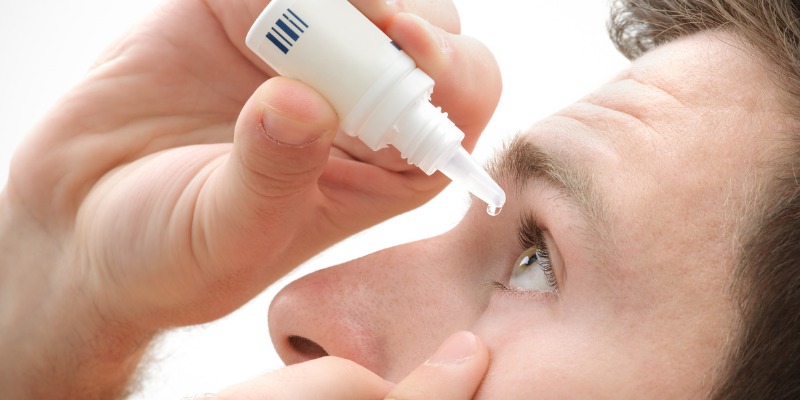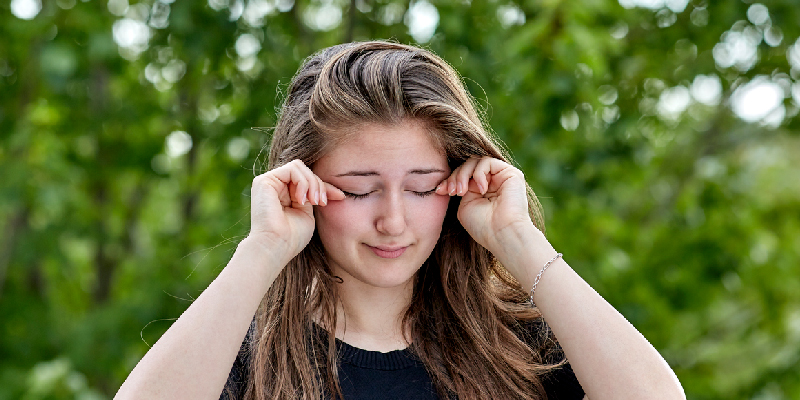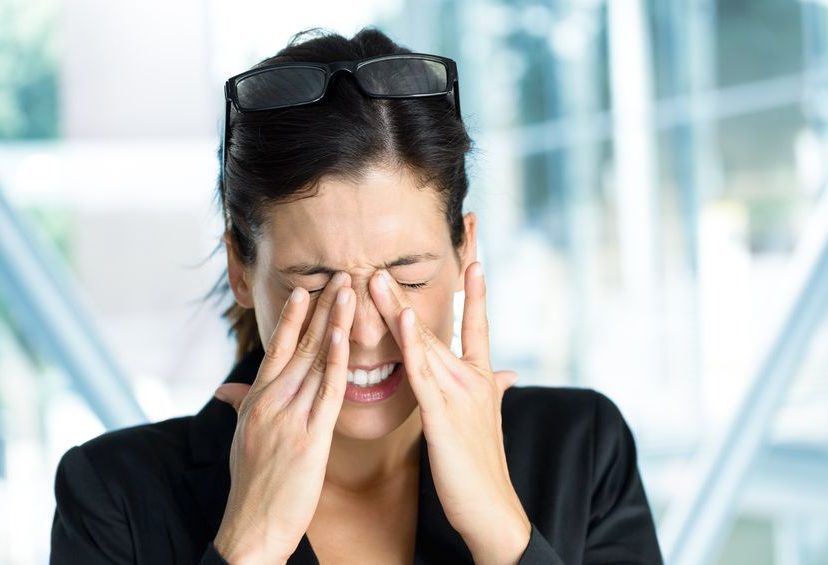I. Introduction
Currently between 16.7 million and 50.2 million Americans have dry eyes. This is between 5-15% of the population.
Living with dry eye disease can be a daily struggle, affecting not only your vision but also your overall quality of life. The persistent discomfort, irritation, and blurry vision can make simple tasks like reading, driving, or working on a computer challenging and exhausting. If you’re one of the millions of people dealing with dry eyes, it’s crucial to stay informed about the latest treatment options that can provide relief and improve your eye health.

As July marks Dry Eye Awareness Month, it’s the perfect time to shed light on the advancements and solutions available to those seeking relief from this common condition. Whether you’re experiencing mild dryness or grappling with severe symptoms, this article will empower you with knowledge about the latest treatments, including over-the-counter options that may offer you relief.
Dry eye disease, also known as dry eye syndrome or keratoconjunctivitis sicca, occurs when your eyes don’t produce enough tears or when the tears evaporate too quickly. It can result from various causes, including age, hormonal changes, certain medications, environmental factors, and underlying health conditions. The symptoms can manifest as a dry or gritty sensation, redness, itchiness, sensitivity to light, blurred vision, and even excessive tearing as a reflex response to the irritation.
The good news is that there have been significant advancements in the field of dry eye treatment. In this blog post, we will explore the latest treatment options available for dry eye disease, highlighting their benefits and mechanisms of action. We’ll also delve into the realm of over-the-counter options, including the emerging 4-terpineol, and discuss how they can complement your treatment plan. Additionally, we’ll provide practical tips for lifestyle modifications and home remedies that can provide supplementary relief. It’s important to note that while these treatments and strategies can be helpful, seeking professional advice is crucial.
Now, let’s dive into the exciting world of dry eye disease treatment and discover how the latest advancements can bring you closer to the relief and comfort you deserve.
II. Understanding Dry Eye Disease: Causes and Symptoms
Before delving into the latest treatment options, it’s essential to gain a clear understanding of dry eye disease and its underlying causes. Dry eye disease occurs when the eyes do not receive adequate lubrication and moisture from tears, leading to discomfort and potential damage to the ocular surface.
Dry eye disease affects millions of people worldwide and can have a significant impact on their daily lives. It is often associated with aging, as tear production tends to decrease with age. However, dry eyes can also result from a variety of other factors, such as hormonal changes, certain medications, environmental conditions, and underlying health conditions.
One of the primary causes of dry eye disease is a disruption in the tear film, which consists of three layers: an outer oily layer, a middle watery layer, and an inner mucous layer. This tear film plays a crucial role in maintaining the health and lubrication of the ocular surface. Any imbalance or deficiency in these layers can result in dryness and discomfort.
The symptoms of dry eye disease can vary from person to person, but common signs and symptoms include:

- Dryness or a gritty sensation: Many individuals with dry eyes experience a persistent dryness or the feeling that there’s something foreign, like sand or grit, in their eyes.
- Redness and irritation: Dry eyes can cause redness, bloodshot appearance, and a persistent itchiness or burning sensation.
- Sensitivity to light: Individuals with dry eyes may find themselves more sensitive to bright lights or experience discomfort when exposed to sunlight or other intense light sources.
- Blurred vision: Dry eye disease can cause intermittent or fluctuating vision problems, leading to blurred vision that may improve with blinking.
- Excessive tearing: Paradoxically, dry eyes can sometimes trigger excessive tearing as a reflex response to the eye’s irritation.
Living with these symptoms can be frustrating and affect your ability to perform daily activities comfortably. That’s why it’s crucial to seek proper diagnosis and treatment for dry eye disease. An eye care professional will evaluate your symptoms, perform a comprehensive eye examination, and determine the underlying causes contributing to your dry eyes. This thorough evaluation is vital for developing an effective treatment plan tailored to your specific needs.
By understanding the causes and recognizing the symptoms of dry eye disease, you can take the necessary steps to manage the condition effectively and improve your overall eye health. In the following sections, we will explore the latest treatment options available, both prescription and over-the-counter, to help alleviate your symptoms and restore ocular comfort.
III. Latest Advances in Dry Eye Disease Treatment
A. Prescription Medications
In recent years, there have been significant advancements in the development of prescription medications specifically designed to target the underlying causes of dry eye disease, particularly inflammation and inadequate tear production. These medications can offer relief and improve the overall health of the ocular surface.
- Anti-Inflammatory Medications: Chronic inflammation plays a key role in dry eye disease. Prescription medications such as corticosteroids and cyclosporine aim to reduce inflammation and alleviate dry eye symptoms. Corticosteroids are potent anti-inflammatory drugs that can provide rapid relief, but they are generally used for short-term treatment due to potential side effects. Cyclosporine, on the other hand, is a long-term maintenance medication that helps to modulate the immune response and promote tear production.
- Lifitegrast: Another emerging class of prescription medications includes lifitegrast, a lymphocyte function-associated antigen-1 (LFA-1) antagonist. Lifitegrast targets the inflammation associated with dry eye disease by blocking the interaction between inflammatory cells and the ocular surface. By reducing inflammation, lifitegrast helps to alleviate symptoms and improve tear production.
These prescription medications have shown promising results in clinical trials and have been approved by regulatory authorities for the treatment of dry eye disease. However, it’s essential to consult with an eye care professional to determine the most appropriate medication and dosage for your specific condition.
Consult with an eye care professional to explore prescription medication options for your dry eye disease and determine the best treatment plan for your needs.
B. Tear Conservation Techniques and Devices
- Punctal Plugs: Punctal plugs are tiny, biocompatible devices inserted into the tear drainage ducts (puncta) of the eyelids to block tear drainage. By preventing tears from draining too quickly, punctal plugs help to retain moisture on the ocular surface, increasing lubrication and reducing symptoms of dry eyes. Punctal plugs can be temporary or permanent and offer a customizable solution for managing dry eye disease.
- Wearable Devices: Innovative wearable devices have emerged as a non-invasive approach to managing dry eye symptoms. These devices, worn over the closed eyelids, provide controlled warmth and gentle pressure to the tear glands, stimulating tear production. They can be used as an adjunct to other treatments and offer convenience and ease of use.
Inquire with your eye care professional about the potential benefits of punctal plugs or wearable devices for managing your dry eye symptoms.
C. Advanced Lubricating Eye Drops and Gels
Lubricating eye drops and gels are a cornerstone of dry eye management. Over the years, advancements in formulation technology have led to the development of advanced lubricating eye drops and gels that offer enhanced benefits in providing relief and protection to the ocular surface.
These advanced formulations often include ingredients such as hyaluronic acid, which can help retain moisture and improve lubrication. Some lubricating eye drops also contain lipid-based components to stabilize the tear film and reduce tear evaporation. These innovations aim to provide longer-lasting relief and comfort for individuals with dry eyes.
Discuss the availability and benefits of advanced lubricating eye drops and gels with your eye care professional to determine which options may be most suitable for your condition.
The latest advances in dry eye disease treatment offer promising solutions for managing symptoms and improving ocular comfort. From prescription medications that target inflammation and tear production to tear conservation techniques and advanced lubricating eye drops, these options provide a comprehensive approach to addressing the underlying causes of dry eyes.
In the next section, we will explore over-the-counter options, including the emerging 4-terpineol.
IV. Over-the-Counter Options: Exploring 4-terpineol and More
While prescription medications offer targeted treatment for dry eye disease, over-the-counter (OTC) options can also play a valuable role in managing mild to moderate symptoms. These products are easily accessible and can provide relief for individuals who prefer self-care approaches or want to complement their prescribed treatments. Let’s explore some popular OTC options, including the emerging ingredient 4-terpineol.
A. Artificial Tears
 Artificial tears, also known as lubricating eye drops, are the most commonly used OTC option for dry eye relief. These drops mimic the composition of natural tears and provide temporary lubrication and moisture to the ocular surface. They can help alleviate symptoms such as dryness, irritation, and discomfort.
Artificial tears, also known as lubricating eye drops, are the most commonly used OTC option for dry eye relief. These drops mimic the composition of natural tears and provide temporary lubrication and moisture to the ocular surface. They can help alleviate symptoms such as dryness, irritation, and discomfort.
When selecting artificial tears, look for preservative-free formulations, as preservatives can sometimes cause additional irritation, especially with frequent use.
When considering artificial tears, consult with your eye care professional to determine the most suitable brand and type of lubricating eye drops for your specific needs.
B. Eye Ointments and Gels
Eye ointments and gels provide longer-lasting lubrication compared to traditional eye drops. They are ideal for use at night or when prolonged relief is desired. These products create a protective layer on the ocular surface, reducing dryness and preventing tears from evaporating too quickly.
Eye ointments are thicker and blur vision temporarily, making them more suitable for use before bedtime. Gels, on the other hand, have a gel-like consistency but do not blur vision as much, allowing for daytime use. Both options offer extended relief and are especially beneficial for individuals with persistent dryness.
Discuss the usage and suitability of eye ointments or gels with your eye care professional to determine if they are appropriate for your specific needs.
C. 4-terpineol: An Emerging Option
 One of the emerging ingredients in OTC eye care products for dry eyes is 4-terpineol. Derived from tea tree oil, 4-terpineol offers potential benefits for individuals experiencing dry eye symptoms. It is known for its antimicrobial and anti-inflammatory properties, which can help soothe and protect the ocular surface.
One of the emerging ingredients in OTC eye care products for dry eyes is 4-terpineol. Derived from tea tree oil, 4-terpineol offers potential benefits for individuals experiencing dry eye symptoms. It is known for its antimicrobial and anti-inflammatory properties, which can help soothe and protect the ocular surface.
While research on 4-terpineol is still ongoing, preliminary studies have shown promising results. This natural ingredient may help reduce inflammation, stabilize the tear film, and provide relief from dry eye symptoms. It is often found in lubricating eye drops and may be a viable option for individuals seeking natural-based OTC remedies.
Inquire with your eye care professional about OTC eye drops containing 4-terpineol and discuss its potential benefits for managing your dry eye symptoms.
Check out the 5 best eyelid cleansers for 2023 article.
D. Warm Compresses and Lid Hygiene
In addition to using OTC eye drops, incorporating warm compresses and practicing proper lid hygiene can be beneficial for managing dry eyes. Warm compresses help increase blood circulation and stimulate the oil glands in the eyelids, promoting a healthy tear film. They can also provide temporary relief from dryness and discomfort.
Lid hygiene involves gently cleaning the eyelids and lashes to remove debris, bacteria, and excess oils that can contribute to dry eye symptoms. Using a mild, non-irritating cleanser or a specially formulated eyelid cleanser, gently massage the eyelids and rinse thoroughly.
Learn proper techniques for warm compresses and lid hygiene from your eye care professional to incorporate these practices into your daily routine for managing dry eye symptoms.
V. Lifestyle and Home Remedies for Dry Eyes
In addition to medical treatments and over-the-counter options, certain lifestyle modifications and home remedies can contribute to managing dry eye symptoms. These practices can help support the overall health of your eyes and minimize environmental factors that exacerbate dryness. Let’s explore some effective strategies that you can incorporate into your daily routine.
A. Environmental Modifications
- Humidify Your Environment: Dry indoor air can worsen dry eye symptoms. Use a humidifier to add moisture to the air in your home or office, especially during the winter months or in arid climates. This can help alleviate dryness and maintain a more comfortable environment for your eyes.
- Avoid Airflow and Drafts: Direct exposure to fans, air conditioning vents, or drafts from open windows can increase tear evaporation and worsen dry eye symptoms. Position yourself away from these sources or use protective eyewear, such as wraparound glasses, to shield your eyes from airflow.
B. Healthy Lifestyle Habits
- Stay Hydrated: Proper hydration is essential for overall health, including ocular health. Drink an adequate amount of water throughout the day to stay hydrated and support tear production.
- Blink Regularly: When working on digital screens or engaging in activities that require prolonged visual concentration, we tend to blink less frequently. Make a conscious effort to blink regularly to help spread tears evenly across the ocular surface and prevent excessive tear evaporation.
C. Eye-Friendly Diet
- Omega-3 Fatty Acids: Incorporating omega-3 fatty acids into your diet may help alleviate dry eye symptoms. Foods rich in omega-3s include fatty fish (salmon, sardines, mackerel), flaxseeds, chia seeds, and walnuts. Alternatively, you can consider omega-3 supplements after consulting with your healthcare provider.
- Vitamin A and C-Rich Foods: Vitamins A and C are essential for maintaining healthy eyes. Include foods like carrots, sweet potatoes, spinach, citrus fruits, and berries in your diet to ensure an adequate intake of these vitamins.
D. Eye Protection
- Sunglasses: When outdoors, protect your eyes from harsh sunlight and wind by wearing sunglasses that provide UV protection. Look for sunglasses with wraparound frames or those that specifically mention protection against dryness and irritation.
- Computer Eyewear: If you spend significant time working on a computer or using digital devices, consider computer eyewear with special coatings that reduce glare and block blue light. This can help minimize eye strain and dryness associated with prolonged screen use.
E. Home Remedies
- Warm Compresses: Apply a warm compress to your closed eyes for a few minutes. This can help stimulate oil gland secretion and improve tear quality. Use a clean, lint-free cloth soaked in warm water or a specifically designed warm compress mask.
- Eye Massage: Gently massage your closed eyelids using clean fingertips in a circular motion. This can help promote oil gland function and distribute tears more effectively.
Remember, while lifestyle modifications and home remedies can provide supplementary relief, they are not substitutes for professional medical advice. It’s crucial to consult with your eye care professional to determine the best course of action for managing your dry eye symptoms.
By incorporating these lifestyle modifications and home remedies into your routine, you can create a more supportive environment for your eyes and alleviate the discomfort associated with dry eye disease.
VI. Conclusion
Dry eye disease is a common condition that affects millions of people worldwide. It can cause significant discomfort and impact daily life. However, with the latest advances in treatment, there is hope for finding relief and managing dry eye symptoms effectively.
In this article, we explored various aspects of dry eye disease, including its symptoms, causes, and treatment options. We discussed the importance of seeking professional medical advice to determine the most suitable treatment plan for your specific condition.
We delved into the latest advances in dry eye disease treatment, such as prescription medications that target inflammation and tear production. These advancements have provided new avenues for managing dry eye symptoms and improving the health of the ocular surface.
We also explored over-the-counter options, including artificial tears, eye ointments, and gels, which can provide relief for individuals with mild to moderate symptoms. Additionally, we highlighted the emerging ingredient 4-terpineol and its potential benefits in managing dry eye symptoms.
Furthermore, we discussed the importance of incorporating lifestyle modifications and home remedies into your daily routine. Environmental modifications, healthy lifestyle habits, an eye-friendly diet, and protective measures can all contribute to reducing dry eye symptoms and maintaining ocular comfort.
It’s important to remember that dry eye disease is a chronic condition that requires ongoing management. The treatment approach may vary from person to person, and it’s essential to work closely with your eye care professional to find the most effective strategies for your individual needs.
By staying informed about the latest advances in dry eye disease treatment and actively participating in your own eye care, you can take control of your symptoms and improve your quality of life.
Remember, this article is for informational purposes only and should not replace professional medical advice. If you are experiencing persistent dry eye symptoms, make sure to consult with an eye care professional who can provide a thorough evaluation and guide you towards the most appropriate treatment options.
With the right approach and support, you can manage dry eye disease and enjoy clear, comfortable vision once again.
- Dana, R., Meunier, J., Markowitz, J. T., Joseph, C., & Siffel, C. (2020). Patient-reported burden of dry eye disease in the United States: results of an online cross-sectional survey. American Journal of Ophthalmology, 216, 7-17.





